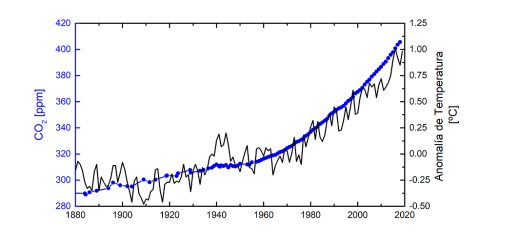PhD THESIS: Ultrafine Particles and Air Quality
July 13, 2011, University of Huelva. Rocío Fernández Camacho defended her PhD Thesis: Origin and features of fine and ultrafine particles in the ambient air of Huelva city. DOWNLOAD THESIS DOCUMENT (PDF).
Air pollution by ultrafine particles has become a matter of concern for air quality managers. Studies performed during the last 3 years are showing that ultrafine particles may cause adverse effects on human health. Current standards for air quality and human health protection set limit values for particles smaller than 10 and 2.5 microns (PM10 and PM2.5, respectively), but not for ultrafine particles (size smaller than 0.1 micron). Up to the date, most of studies on urban air quality and ultrafine particles have mostly focused on vehicle exhaust emissions. Dr. Fernandez-Camacho investigated on other possible significant sources of ultrafine particles. More specifically, she assessed the role of some industrial emissions. Dr. Fernandez-Camacho has demonstrated how industrial emissions of sulphur dioxide (SO2) are nowadays a significant source of ultrafine particles. These emissions occur in oil refineries and power plants, among other sources. The study was performed in Huelva, one of the most industrialized cities of Spain, which also hosts the second most important copper smelter plant in Europe. She shows how, because of these industrial emissions, the concentrations of ultrafine particles and of several toxic metals (arsenic, cadmium, lead, zinc, bismuth, selenium and copper) in Huelva city are 3 to 5 times higher than those recorded in other European cities where industrial emissions do not occur.
“In Huelva, people breathe an exotic cocktail of ultrafine particles of sulphuric acid, arsenic, cadmium, zinc and lead, but we do not still know what whole effects on human health are”, Fernández-Camacho said.
The results of this study has been publicised in several international scientific journals.
This Thesis has been supervised by scientists of the Izaña Atmospheric Research Centre-AEMET (Dr. Sergio Rodríguez) and the University of Huelva (Dr. Jesús de la Rosa). The work was developed within the framework of several research projects funded by the Ministry of the Environment (EPAU), Ministry of Science and Innovation (GRACCIE) and Government of Andalusia (AER-REG), in which the Research Council of Spain (IDAEA-CSIC) also participated.
The relevance in this study is supported by several publications in international scientific journals:
Ultrafine particle formation in the inland sea breeze airflow in Southwest Europe. Atmospheric Chemistry and Physics
http://www.atmos-chem-phys.net/10/9615/2010/acp-10-9615-2010.pdf
Geochemical characterization of Cu-smelter emission plumes with impact in an urban area of SW Spain. Atmospheric Research
http://www.sciencedirect.com/science/article/pii/S0169809510000190
Levels and chemical composition of PM in a city near a large Cu-smelter in Spain. Journal of Environmental Monitoring
http://pubs.rsc.org/en/Content/ArticleLanding/2011/EM/c0em00708k
Links to press news:
http://huelva24.com/not/4924/la_universidad_de_huelva_concluye_un_estudio_sobre_las_particulas_ultrafinas_y_el_arsenico_en_la_capital
http://www.huelvainformacion.es/article/huelva/1020573/estudio/recomienda/mayor/control/arsenico/aire/huelva.html
http://www.heconomia.es/volatil.asp?o=-709474403







